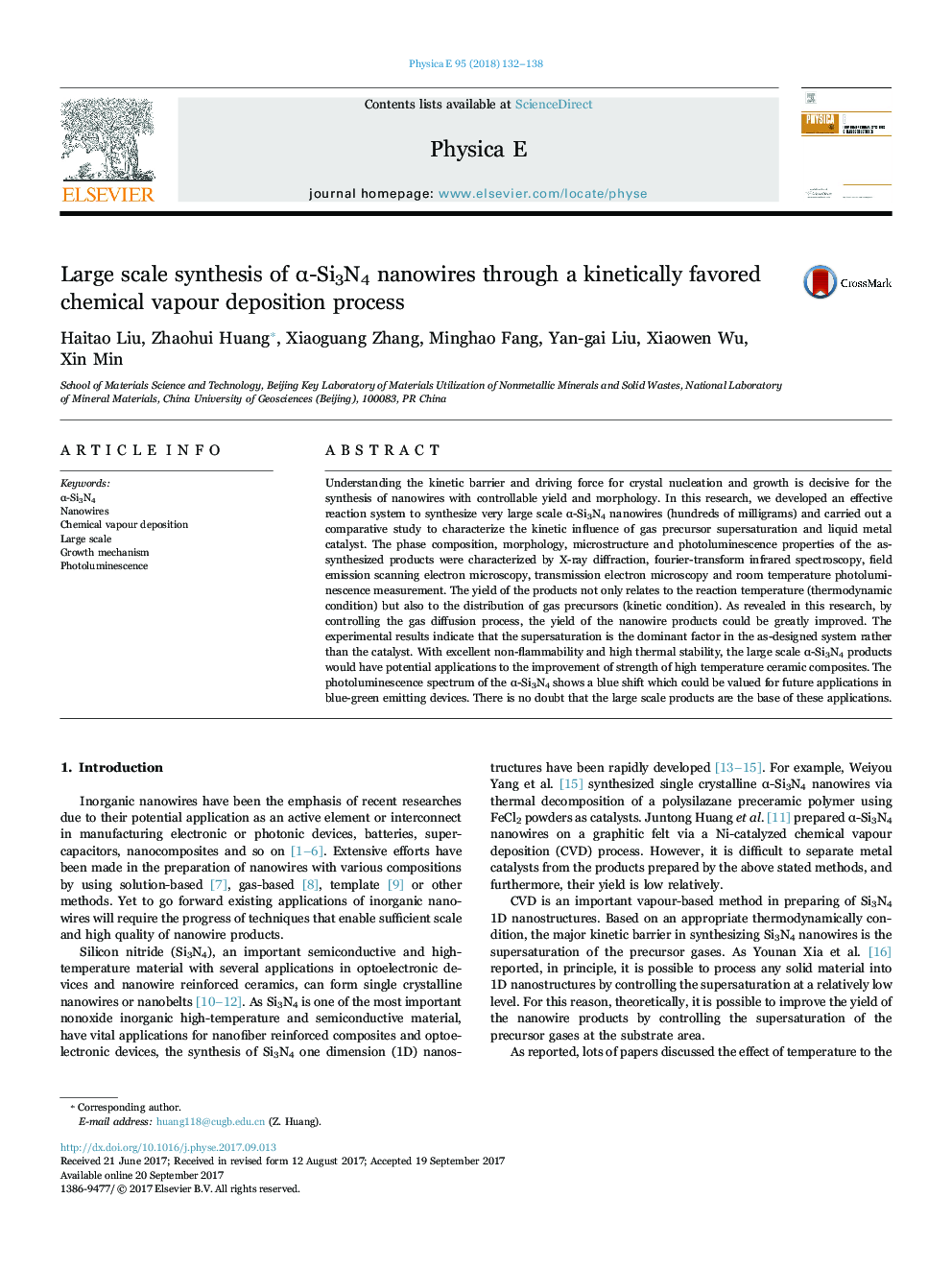| Article ID | Journal | Published Year | Pages | File Type |
|---|---|---|---|---|
| 5450063 | Physica E: Low-dimensional Systems and Nanostructures | 2018 | 7 Pages |
Abstract
Understanding the kinetic barrier and driving force for crystal nucleation and growth is decisive for the synthesis of nanowires with controllable yield and morphology. In this research, we developed an effective reaction system to synthesize very large scale α-Si3N4 nanowires (hundreds of milligrams) and carried out a comparative study to characterize the kinetic influence of gas precursor supersaturation and liquid metal catalyst. The phase composition, morphology, microstructure and photoluminescence properties of the as-synthesized products were characterized by X-ray diffraction, fourier-transform infrared spectroscopy, field emission scanning electron microscopy, transmission electron microscopy and room temperature photoluminescence measurement. The yield of the products not only relates to the reaction temperature (thermodynamic condition) but also to the distribution of gas precursors (kinetic condition). As revealed in this research, by controlling the gas diffusion process, the yield of the nanowire products could be greatly improved. The experimental results indicate that the supersaturation is the dominant factor in the as-designed system rather than the catalyst. With excellent non-flammability and high thermal stability, the large scale α-Si3N4 products would have potential applications to the improvement of strength of high temperature ceramic composites. The photoluminescence spectrum of the α-Si3N4 shows a blue shift which could be valued for future applications in blue-green emitting devices. There is no doubt that the large scale products are the base of these applications.
Related Topics
Physical Sciences and Engineering
Materials Science
Electronic, Optical and Magnetic Materials
Authors
Haitao Liu, Zhaohui Huang, Xiaoguang Zhang, Minghao Fang, Yan-gai Liu, Xiaowen Wu, Xin Min,
